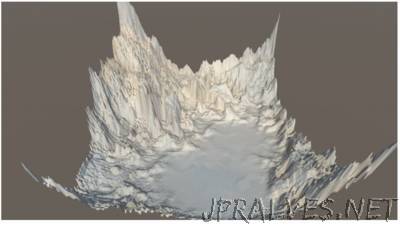
“The landscapes in video games and artificial worlds can be generated in two ways. The first is to hand-craft the terrain and populate it with appropriate colors and textures such as rocks, grass, trees, snow and so on. This produces high-quality results but is expensive because of the human labor involved. The second method is to generate the landscape algorithmically, a process that is much quicker and cheaper. This is how players in the game Minecraft enter an entirely new landscape every time they play. The algorithms behind this process are well developed, and programmers have fine-tuned them over the years to produce different climates, textures, height variations and so on. But new landscape-generating algorithms are themselves time-consuming and expensive to write. So a way to automate their creation would be a significant advance. Today Christopher Beckham and Christopher Pal at the Montreal Institute of Learning Algorithms in Canada say they have trained a deep-learning machine to generate realistic landscapes using satellite images of Earth as a training set. In effect, the machine writes its own algorithm. The work promises to significantly change the way artificial landscapes can be generated on the fly. The system that Beckham and Pal exploit is called a generative adversarial network. It consists of two deep-learning machines that work together to tackle a problem, in this case generating realistic terrain. The first machine generates new terrain while the second evaluates the results and provides feedback. The first machine then uses this feedback to produce another set of landscapes, which the second machine evaluates with feedback, and so on. The idea is that the second machine learns to produce landscapes that match the feedback given by the first machine.”
